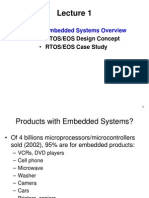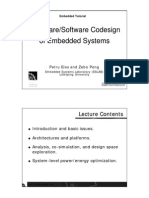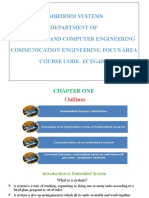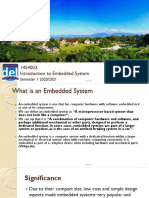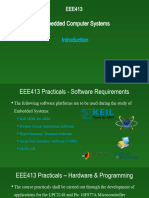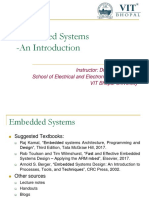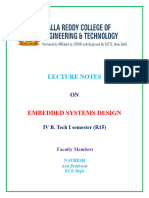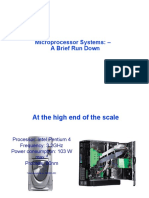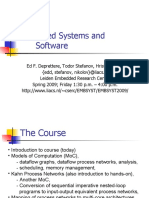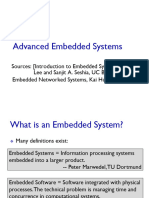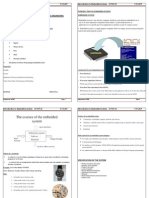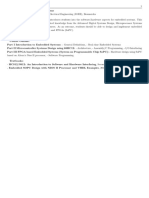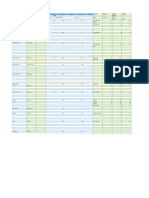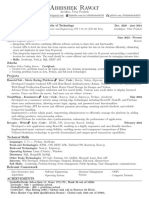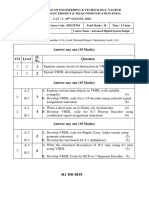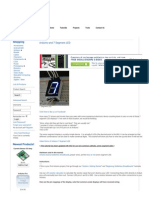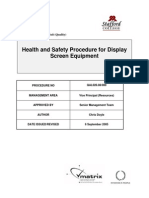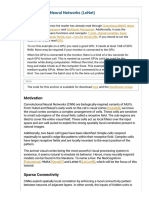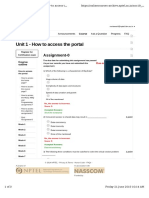0% found this document useful (0 votes)
60 views34 pagesEmbedded System-2024.2-Chap1-En
The document outlines a course on Embedded Systems at Hanoi University of Science and Technology, detailing prerequisites, course contents, and evaluation methods. It covers topics such as embedded system organization, hardware design, software development, and real-time operating systems. The course includes hands-on labs and references various technical documents and books for further study.
Uploaded by
tuanmigiCopyright
© © All Rights Reserved
We take content rights seriously. If you suspect this is your content, claim it here.
Available Formats
Download as PDF, TXT or read online on Scribd
0% found this document useful (0 votes)
60 views34 pagesEmbedded System-2024.2-Chap1-En
The document outlines a course on Embedded Systems at Hanoi University of Science and Technology, detailing prerequisites, course contents, and evaluation methods. It covers topics such as embedded system organization, hardware design, software development, and real-time operating systems. The course includes hands-on labs and references various technical documents and books for further study.
Uploaded by
tuanmigiCopyright
© © All Rights Reserved
We take content rights seriously. If you suspect this is your content, claim it here.
Available Formats
Download as PDF, TXT or read online on Scribd
/ 34


